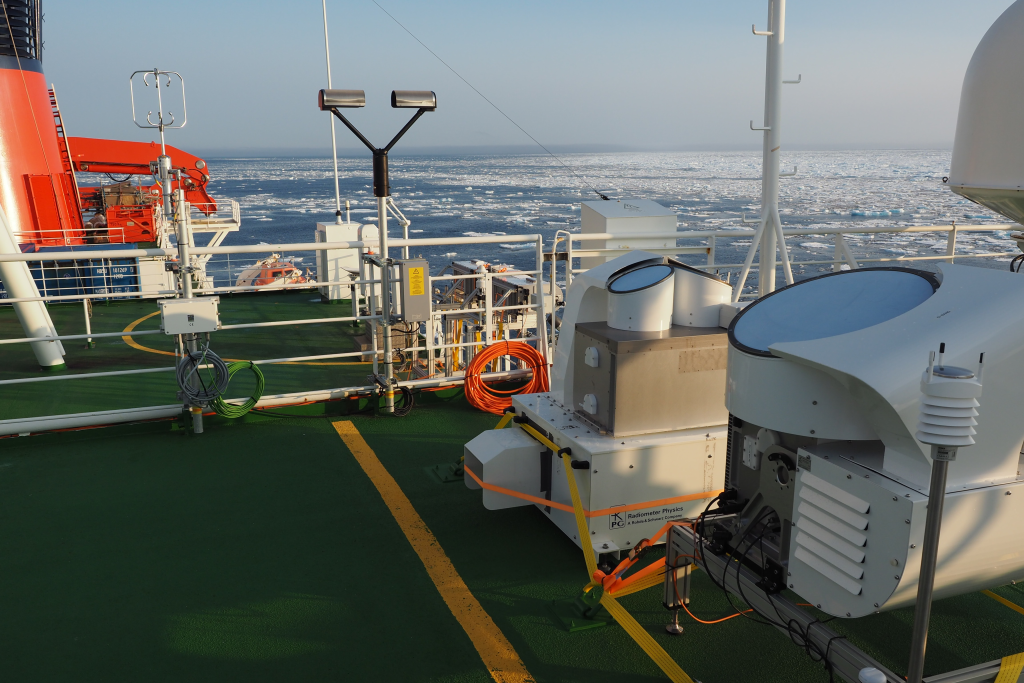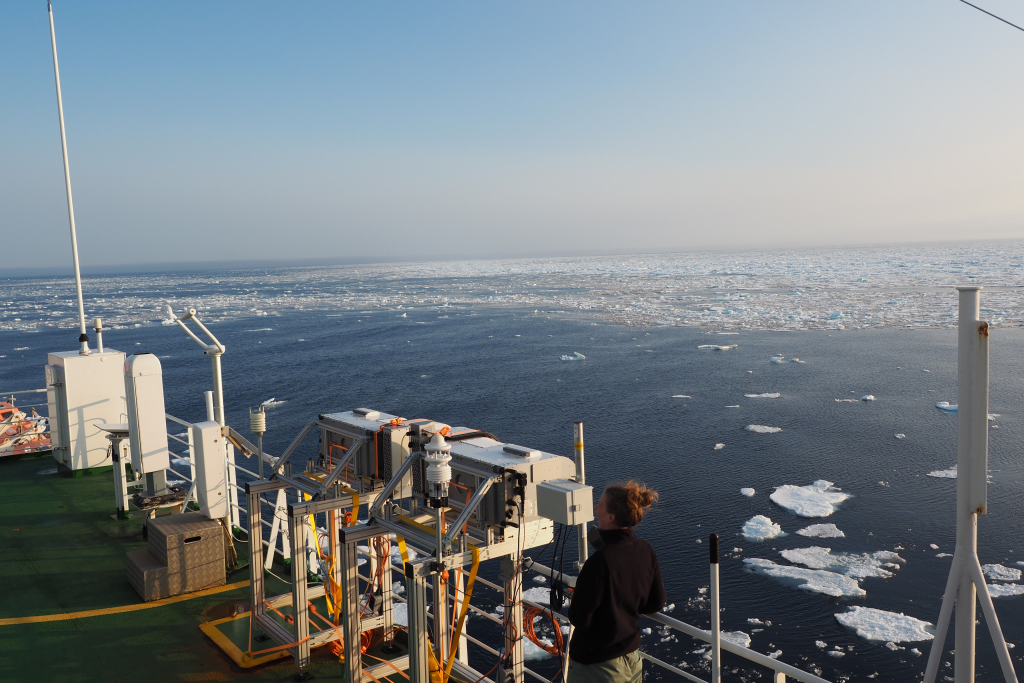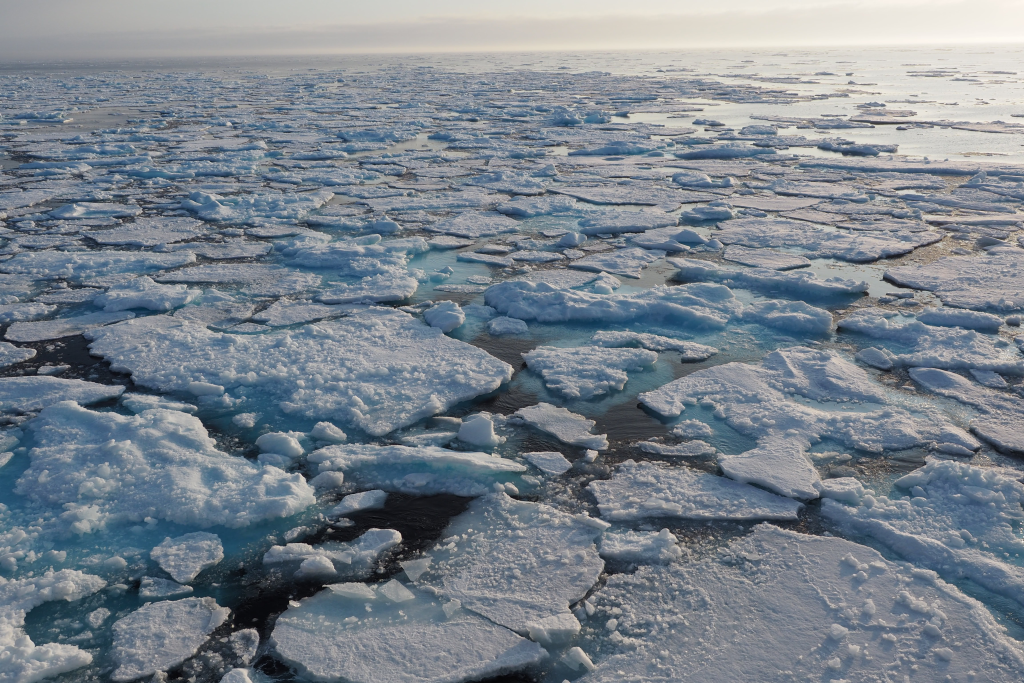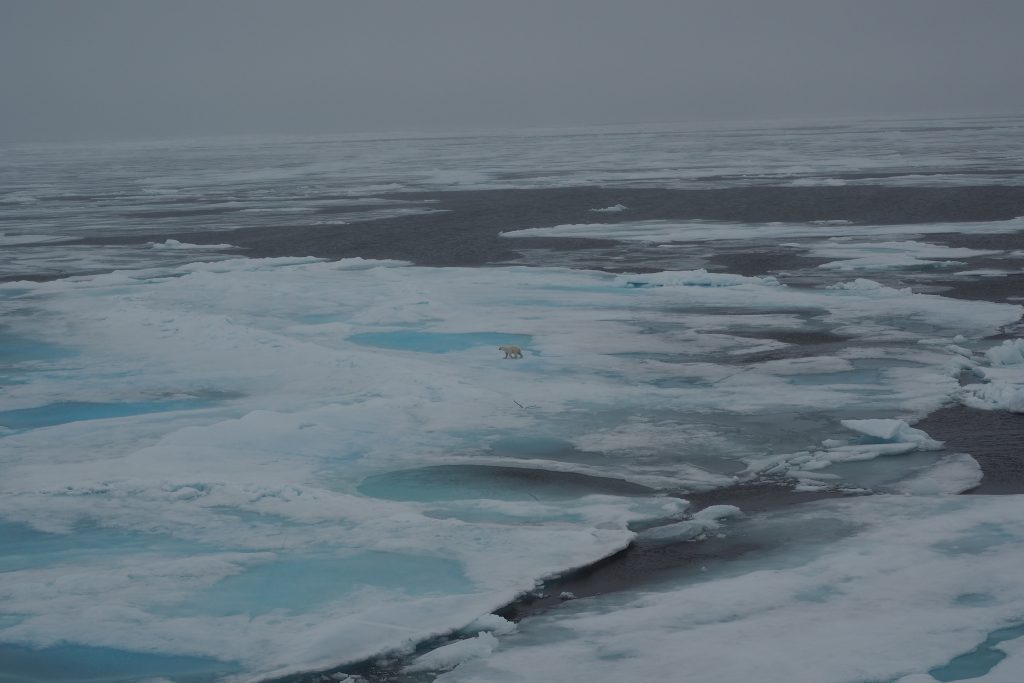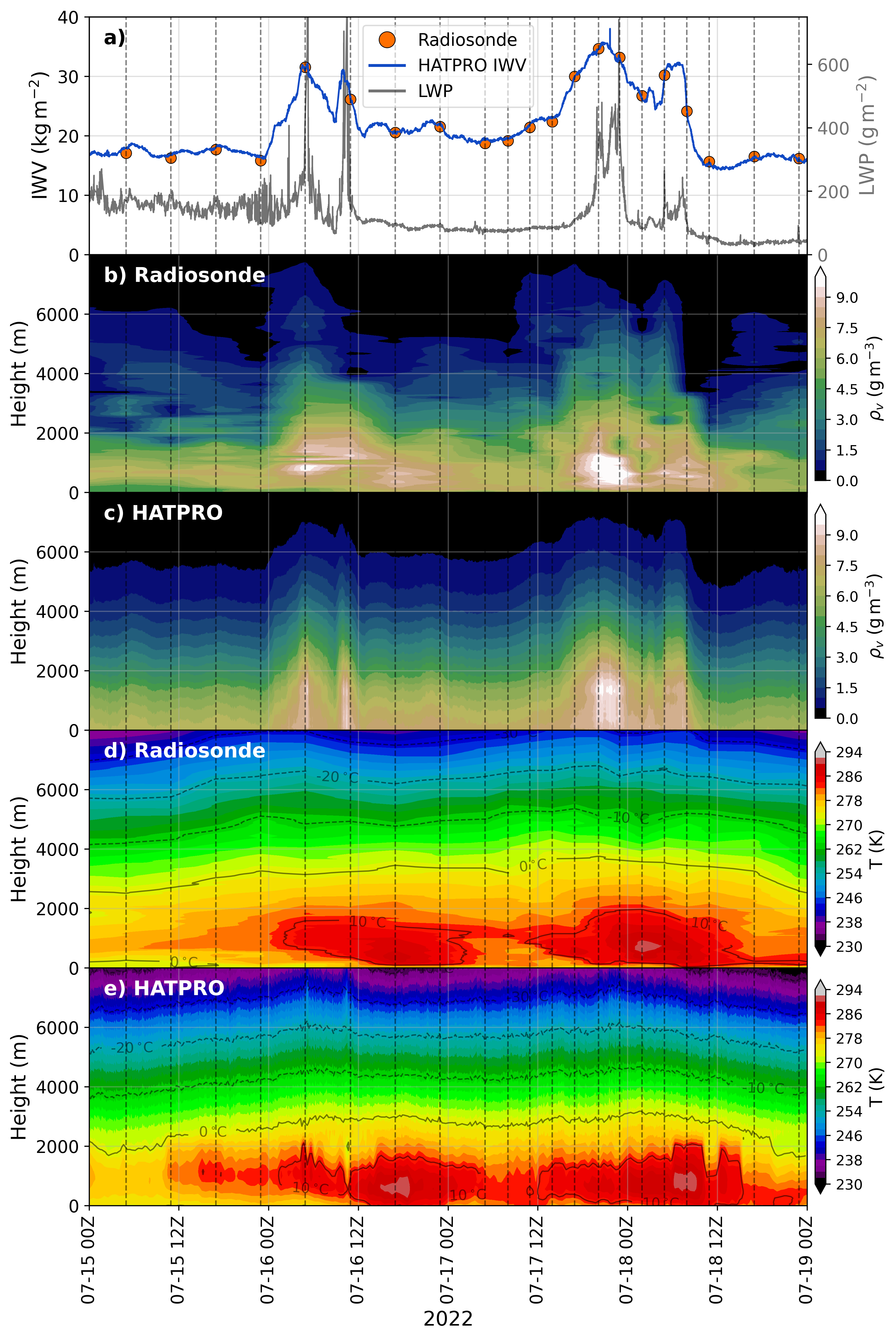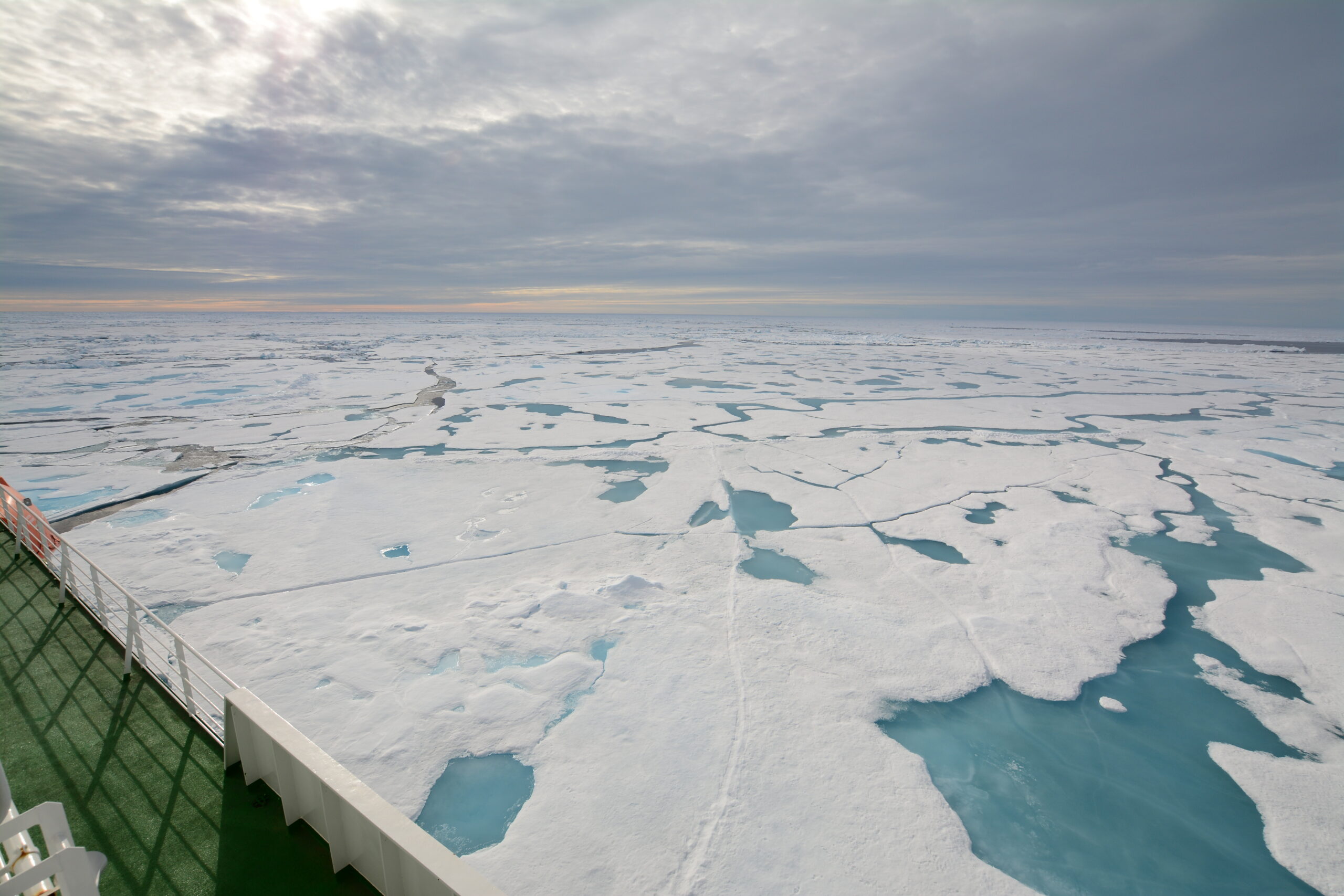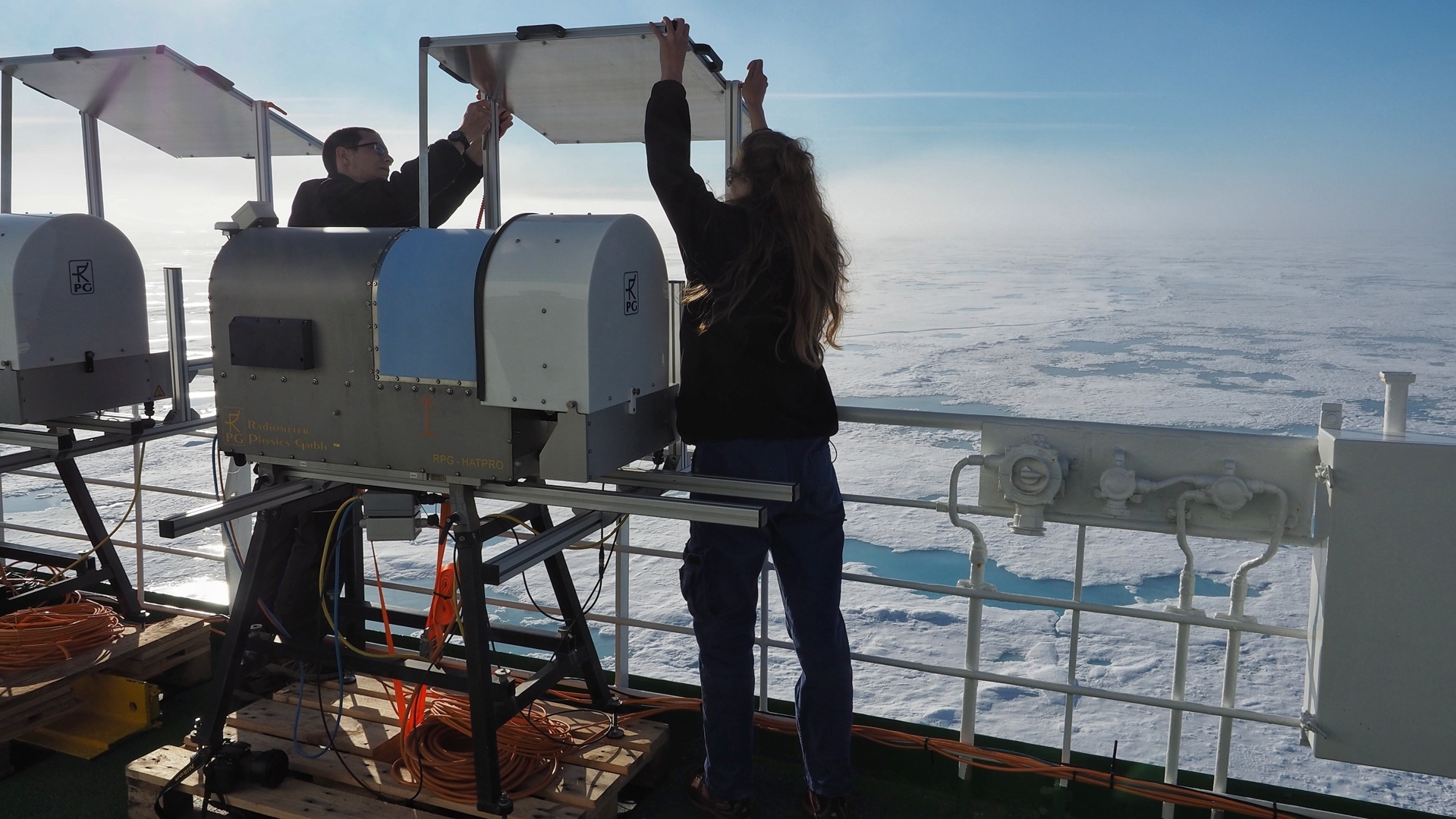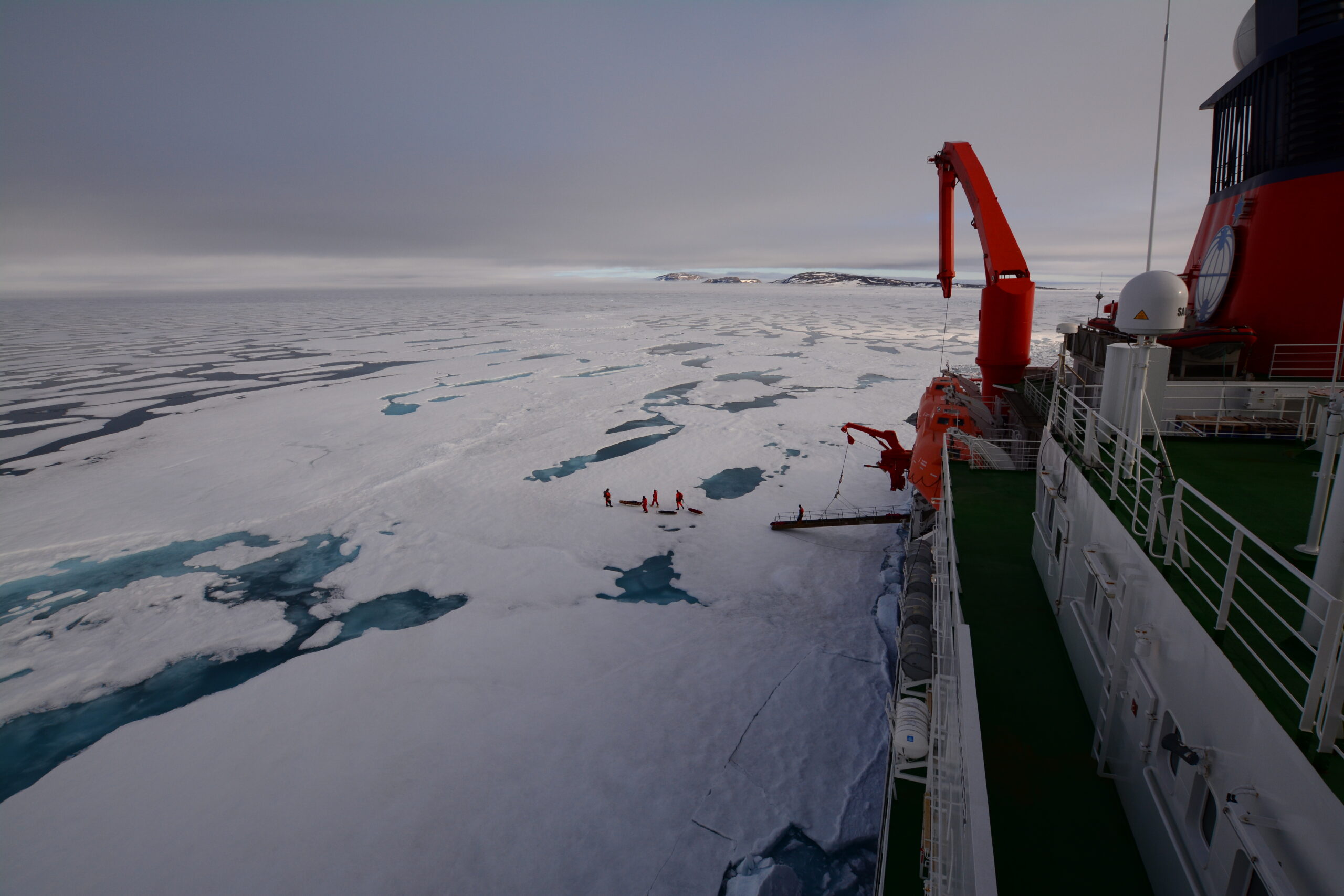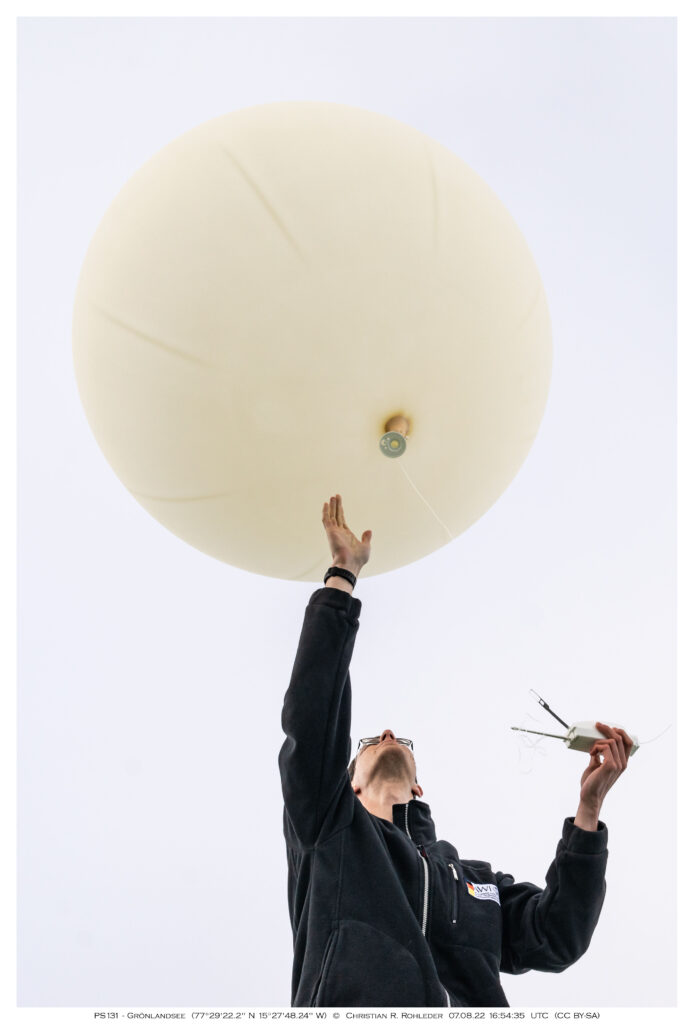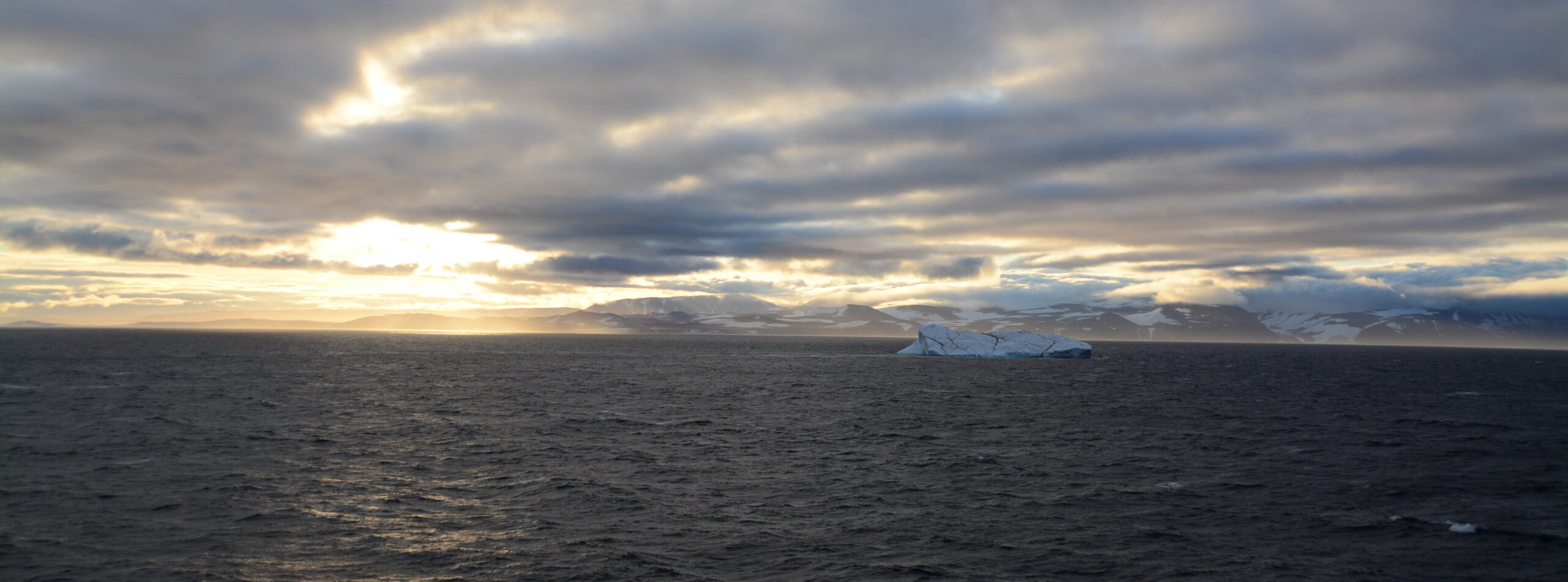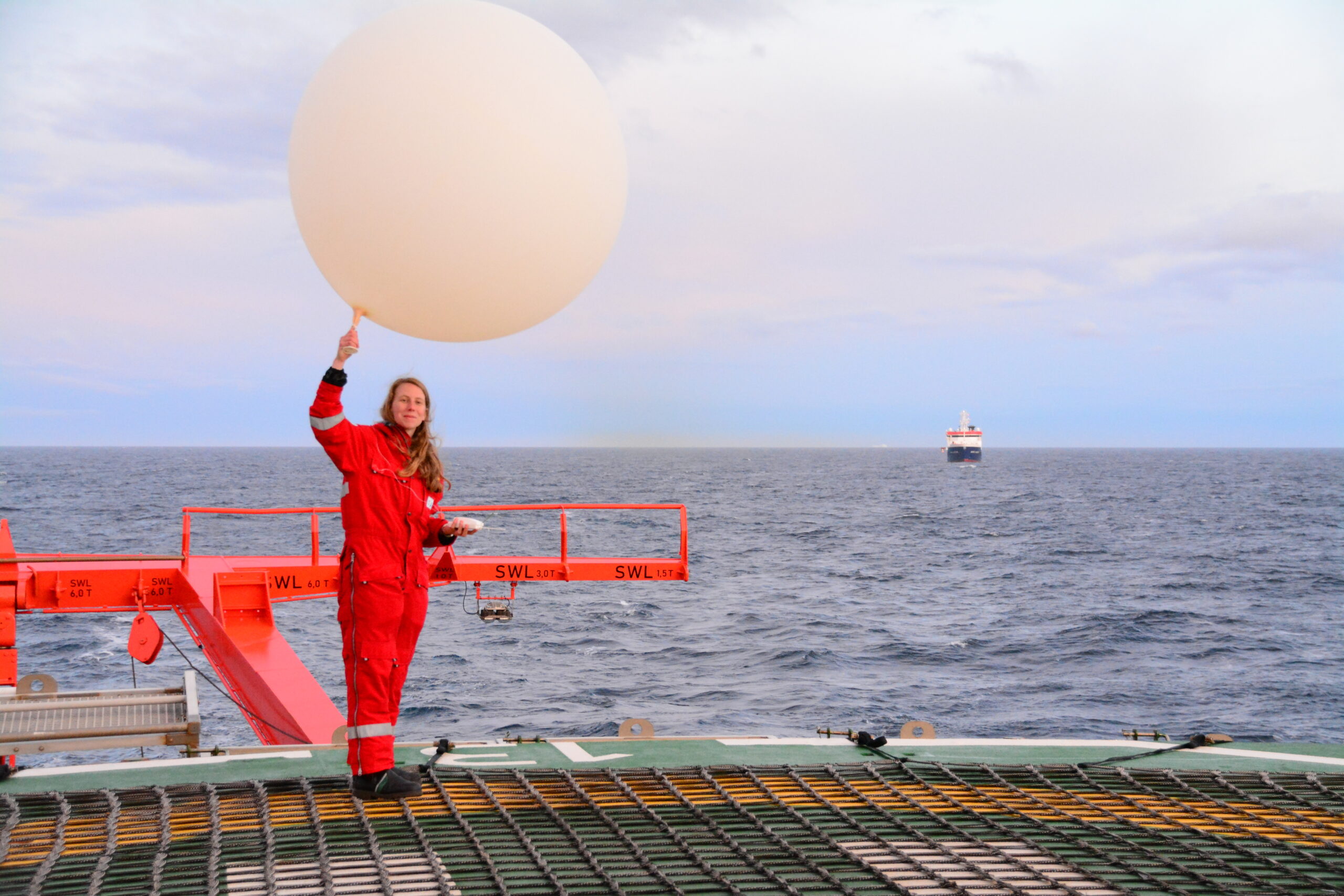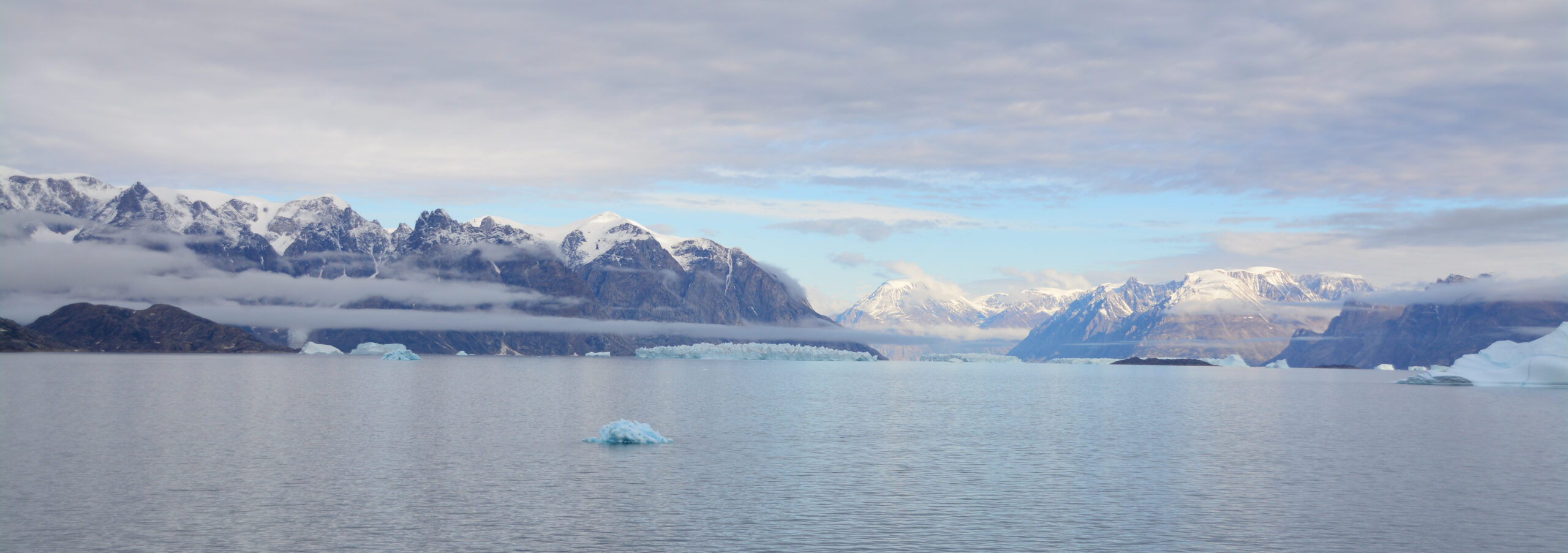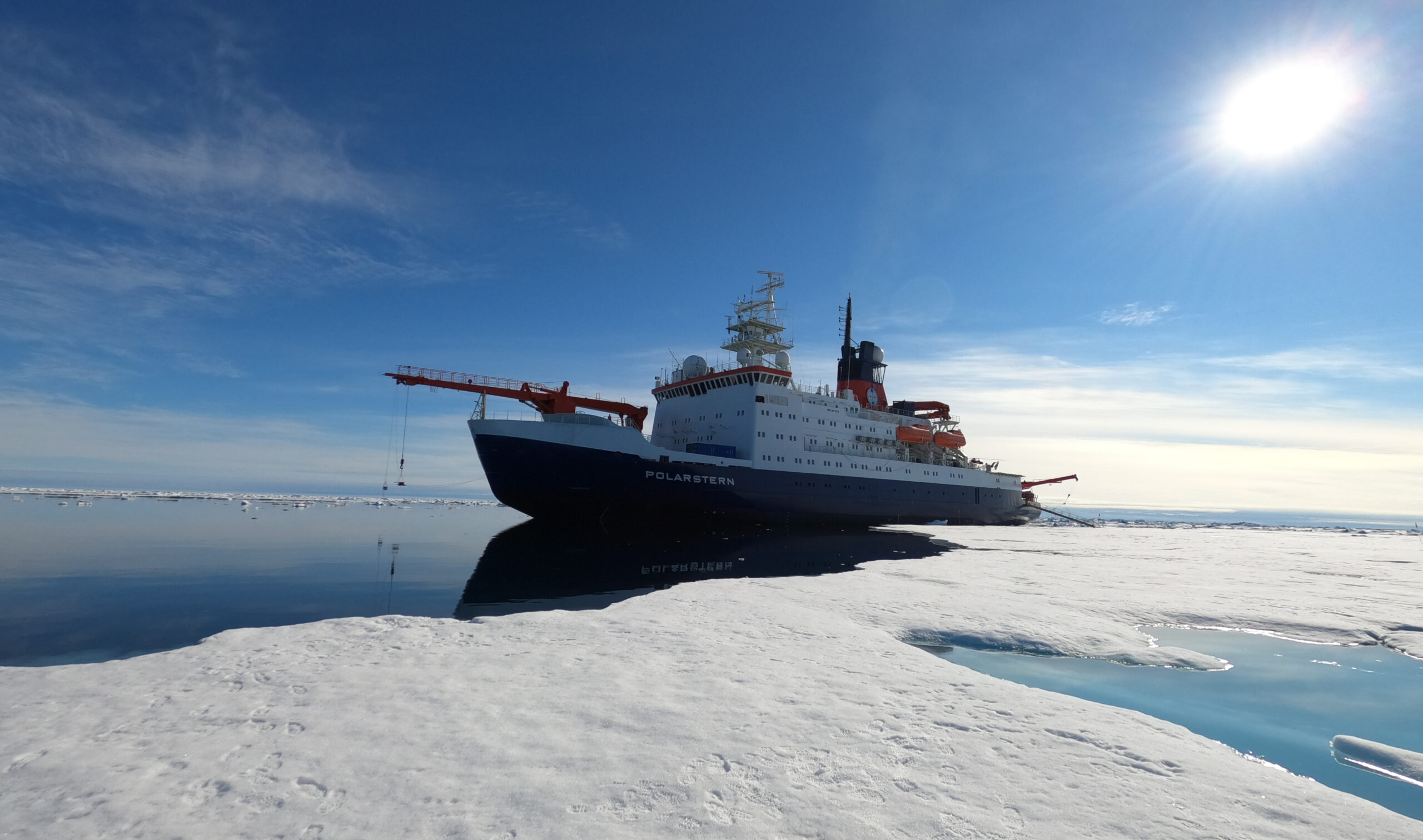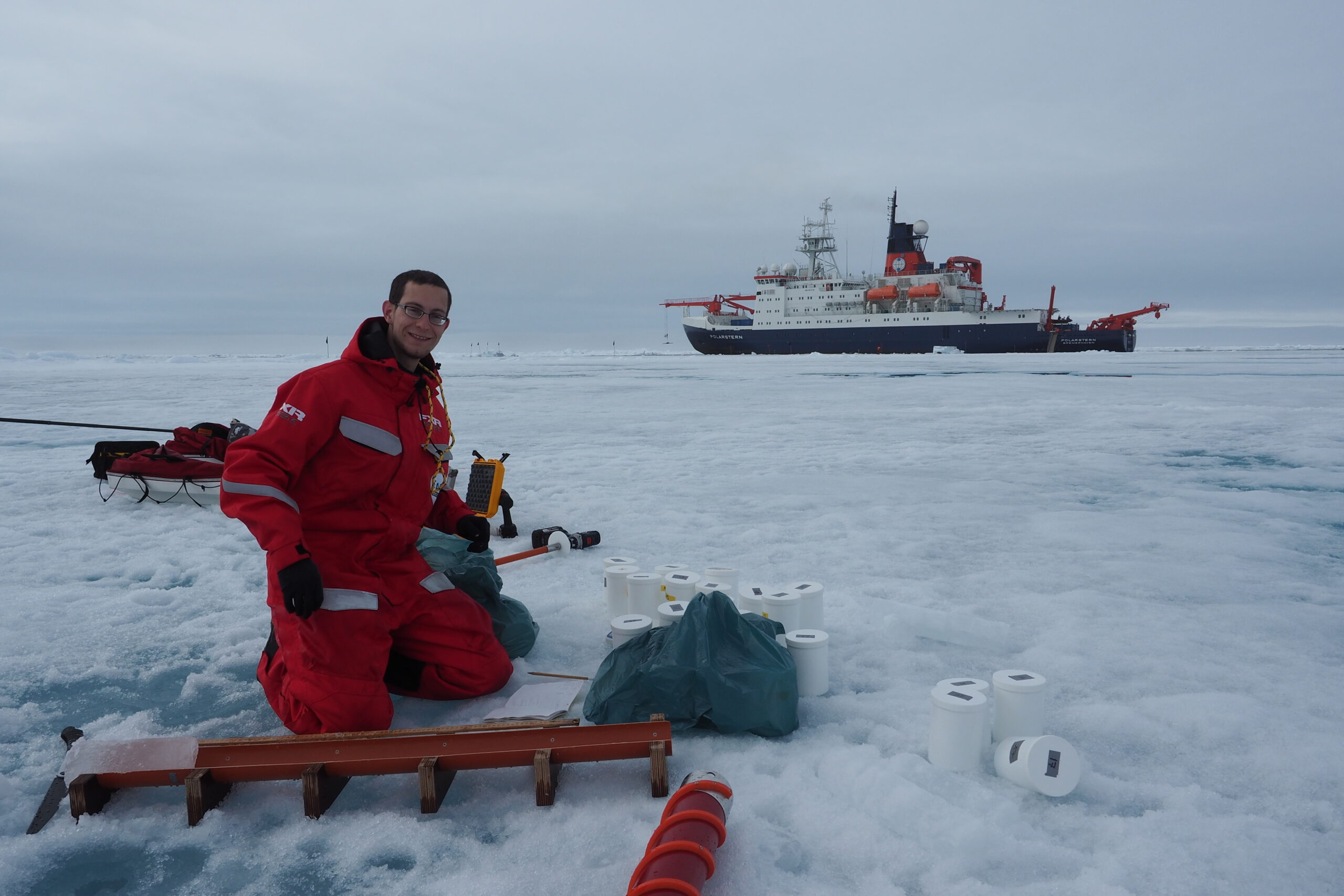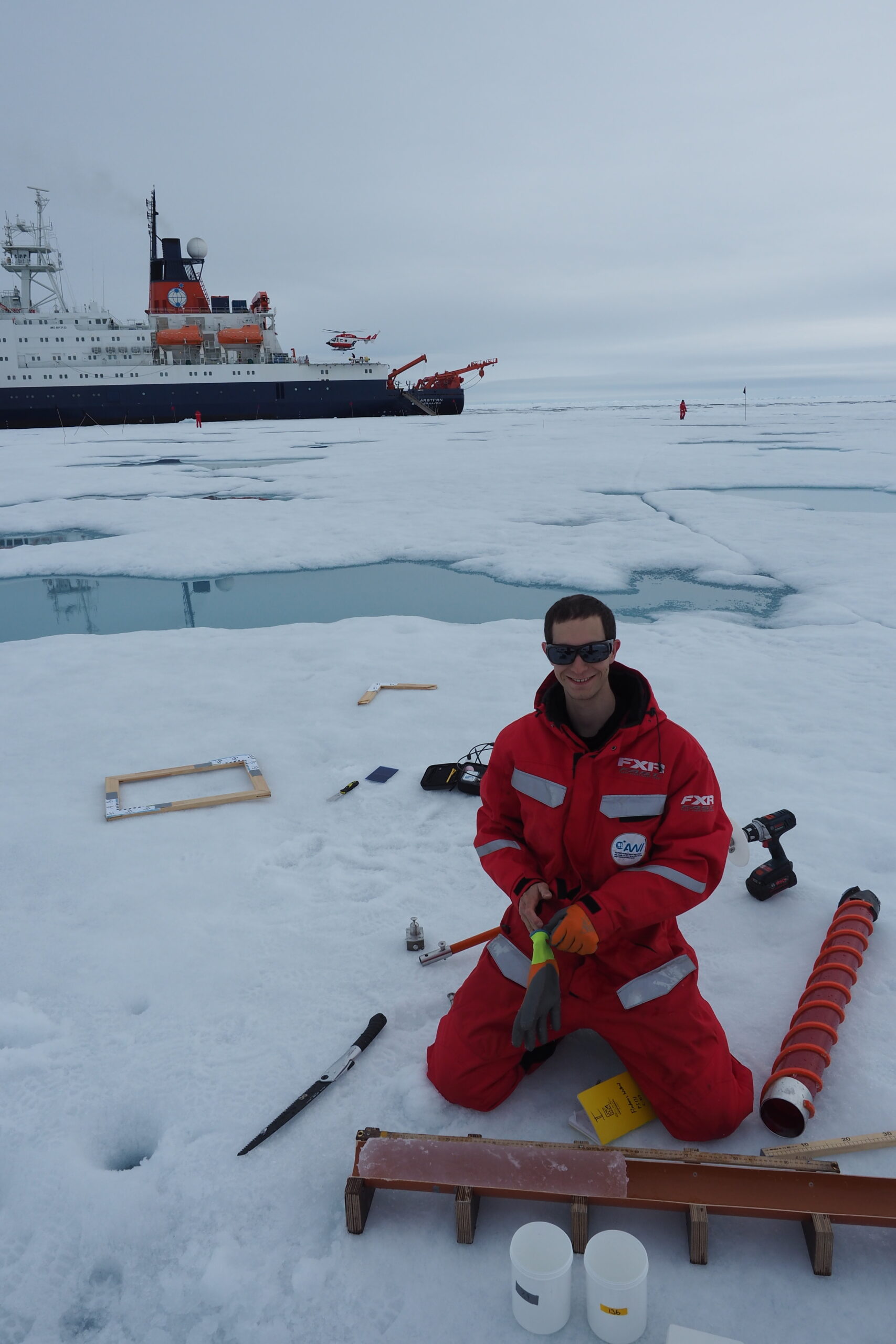A couple of days ago, we had the first ice station, where we measured the ice properties in the area covered by the radiometers. This means we looked at vertical profiles of temperature, salinity, and density in an ice core, surface roughness, the microstructure of snow and ice, and ice thickness, while one of us took over the watch for polar bears.
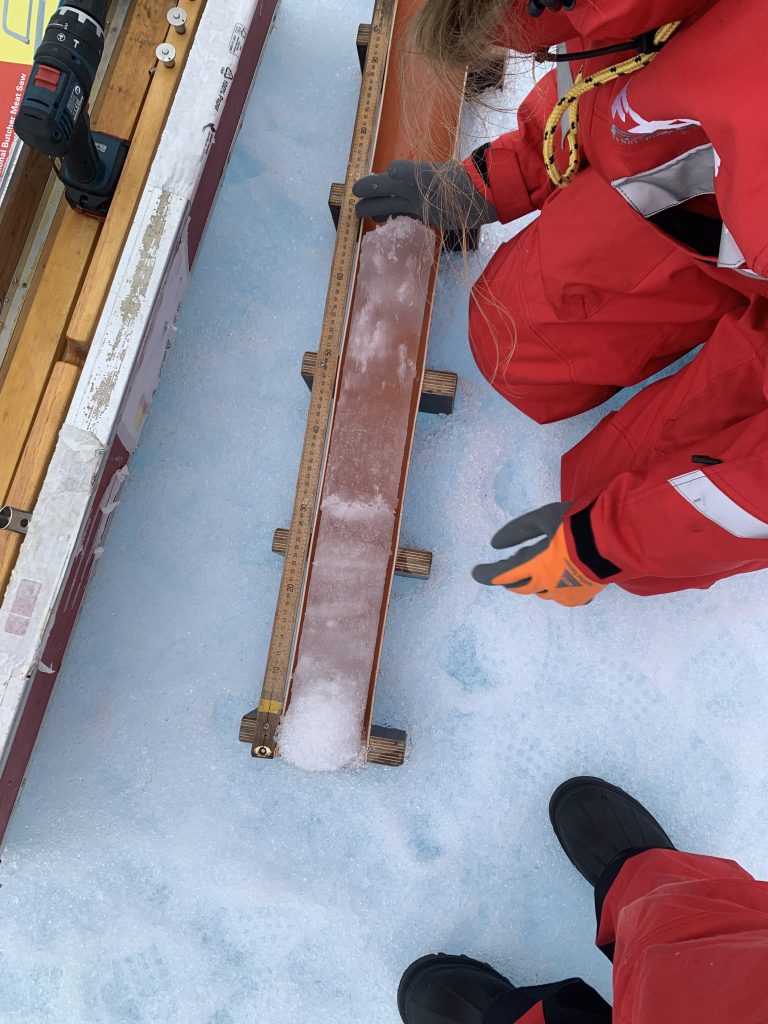
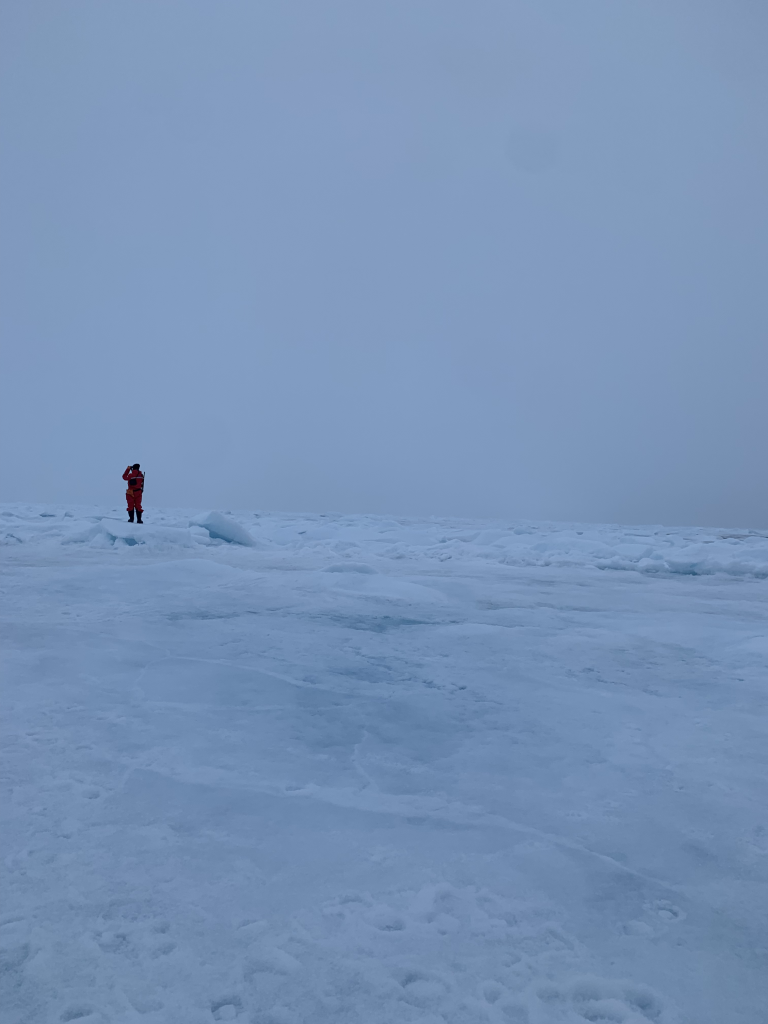
By now, we have also gotten used to staying up late (or waking up in the night) to launch a radiosonde at midnight which collects temperature, pressure, humidity and wind profiles until a height of about 35 kilometers. (Nils is currently leading our internal scoreboard with a radiosonde height of 35.4 km.)
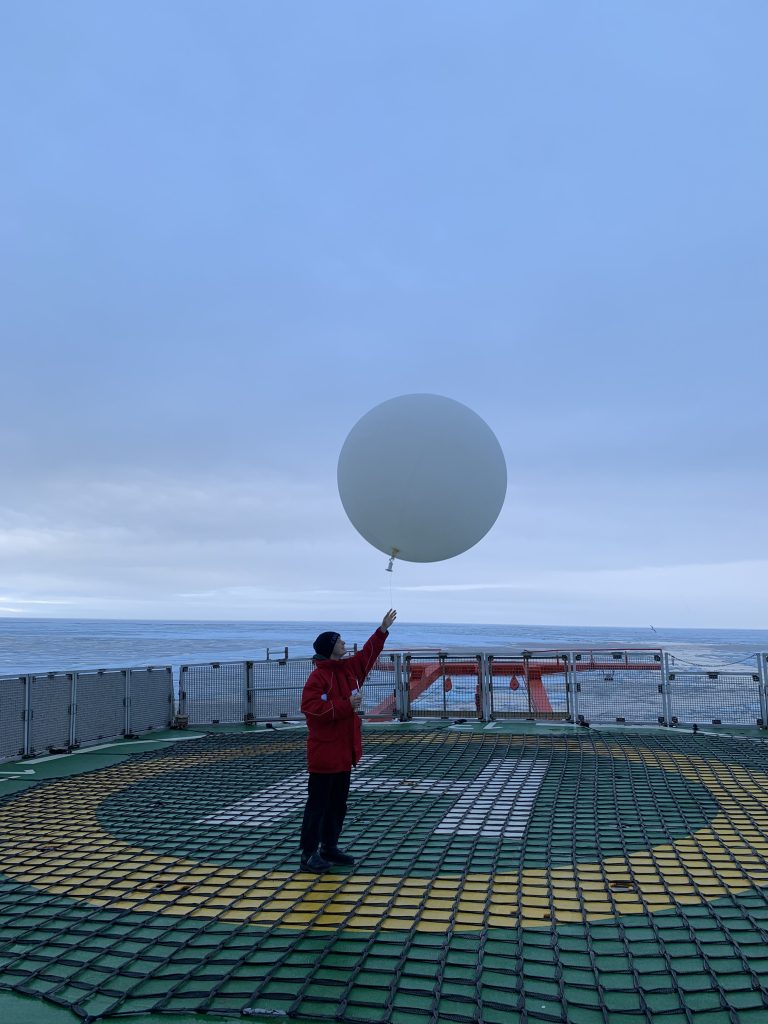
The last couple of days were very foggy, but we could see higher clouds below zero degrees which look very promising for mixed phase hydrometeors!

